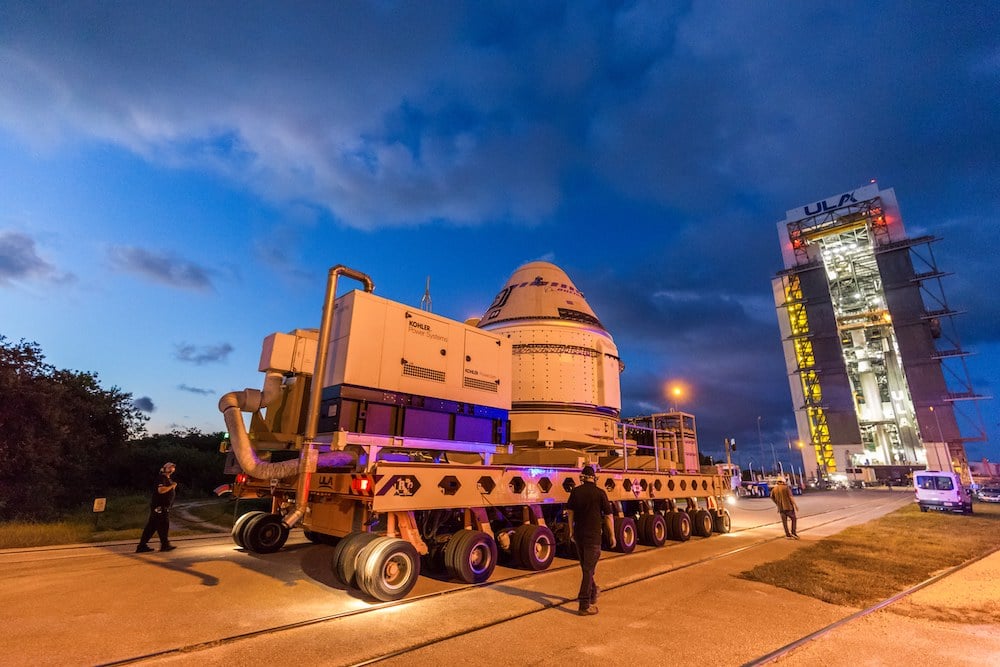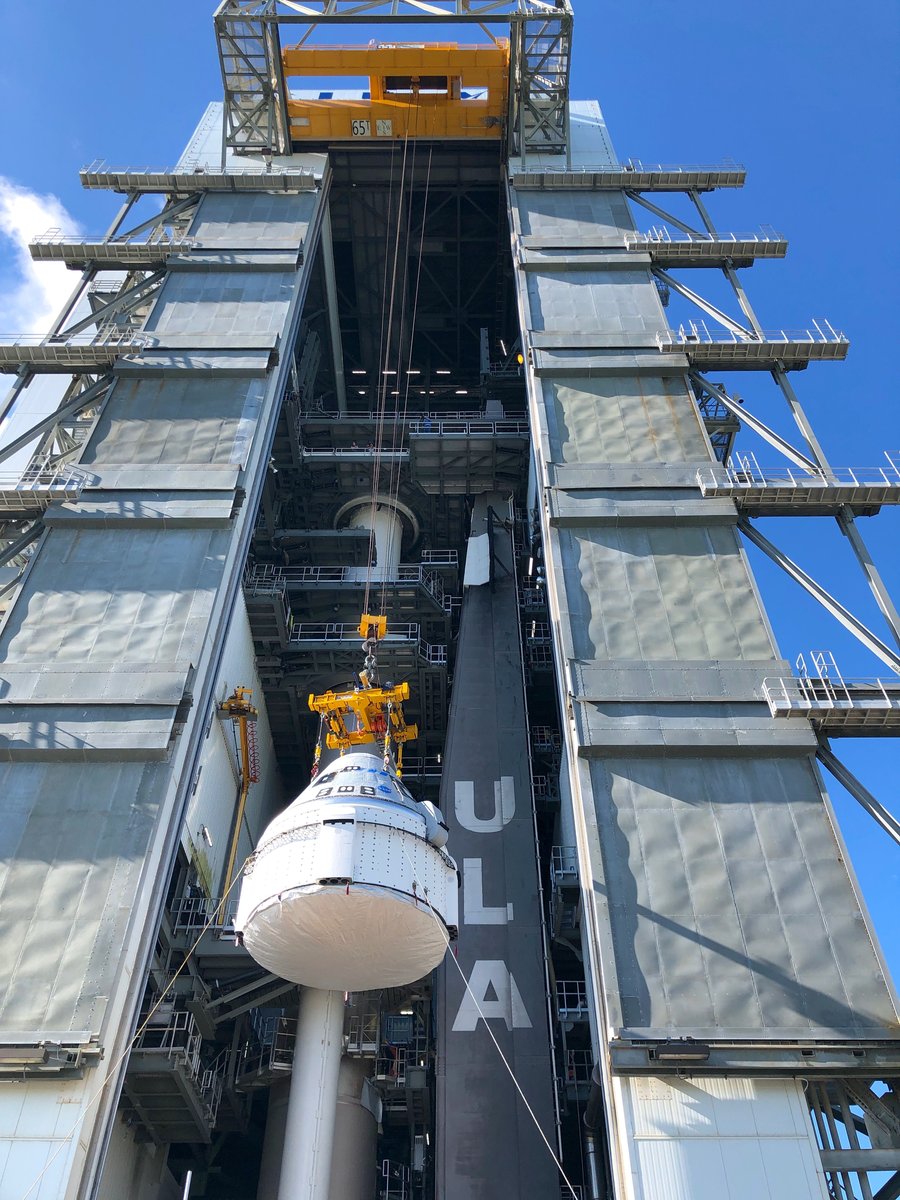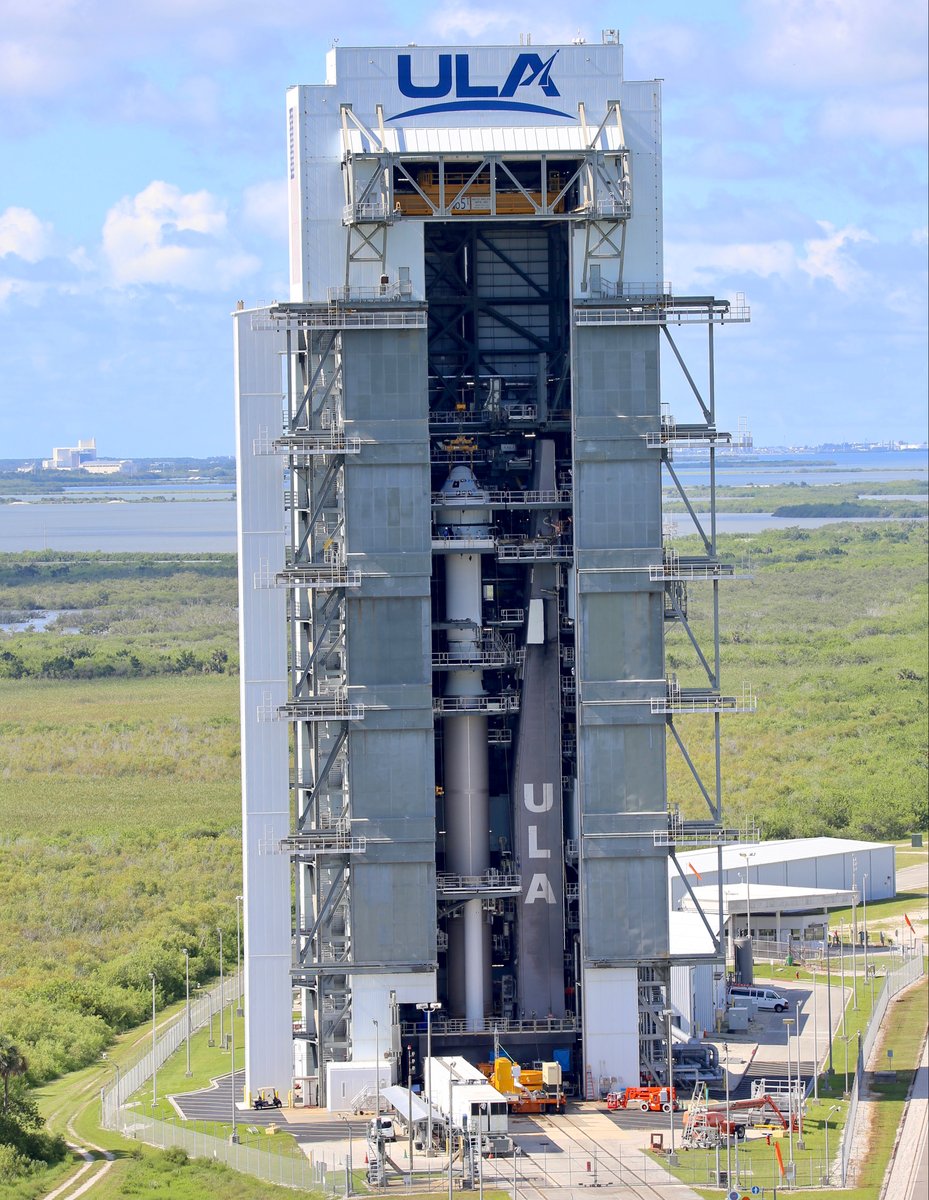Boeing's CST-100 Starliner spacecraft is fully assembled on its ride to space, the United Launch Alliance (ULA) Atlas V rocket, in preparation for the 2:53 p.m. Friday, July 30, launch of its second Orbital Flight Test (OFT-2) in collaboration with NASA's Commercial Crew Program.
The joining of Atlas V and Starliner is a major milestone ahead of the second uncrewed flight test to demonstrate the system's human transportation capabilities to the International Space Station. The test is the last flight before the Starliner system launches American astronauts on the Crew Flight Test to the microgravity laboratory - the first flight test with crew on board.

Early this morning, the capsule traveled from Boeing's Commercial Crew and Cargo Processing Facility (C3PF) at NASA’s Kennedy Space Center to ULA's Vertical Integration Facility (VIF) at Cape Canaveral Space Force Station for hoisting on top of the Atlas V.
ULA's motorized payload transporter, adapted to carry Starliner, moved at a top speed of 5 mph, heading from the C3PF, a former space shuttle hangar, eastward to the beach and then southward to Space Launch Complex-41. During the transport, Starliner was provided environmental controls also on the transporter deck.
Approaching the VIF, the transporter maneuvered up to the 30-story-tall building's doorway and parked. A four-point lifting sling, called the Handling Fixture Hoist Tool, was connected to the Starliner for the overhead crane to carefully raise the capsule onto the Atlas V waiting inside the VIF aboard its mobile launch platform.

Starliner was positioned for mating to the launch vehicle adapter that serves as the spacecraft's cradle on the rocket during ascent. The adapter also features the aeroskirt structure that smooths the air over the combined payload and Atlas V for aerodynamic stability.
Accommodations for Starliner in the VIF include a clean enclosure to enter the capsule's crew module through the hatchway, access stands for technicians to detach the lift sling and complete preflight work to the spacecraft's exterior, as well as power and data transmission umbilicals and purge and cooling lines.
Next up is the integrated systems test, a tip-to-tail electrical check of the 172-foot-tall Atlas V and Starliner stack.

OFT-2 will launch Starliner on a mission to rendezvous and dock to the International Space Station and then return about five to 10 days later to land in the western United States. The mission is an end-to-end test flight to prove the system is ready to fly astronauts.
For more photos of the Atlas V Starliner OFT-2 mission, visit ULA’s Flickr page.

 Back To Blog List
Back To Blog List



